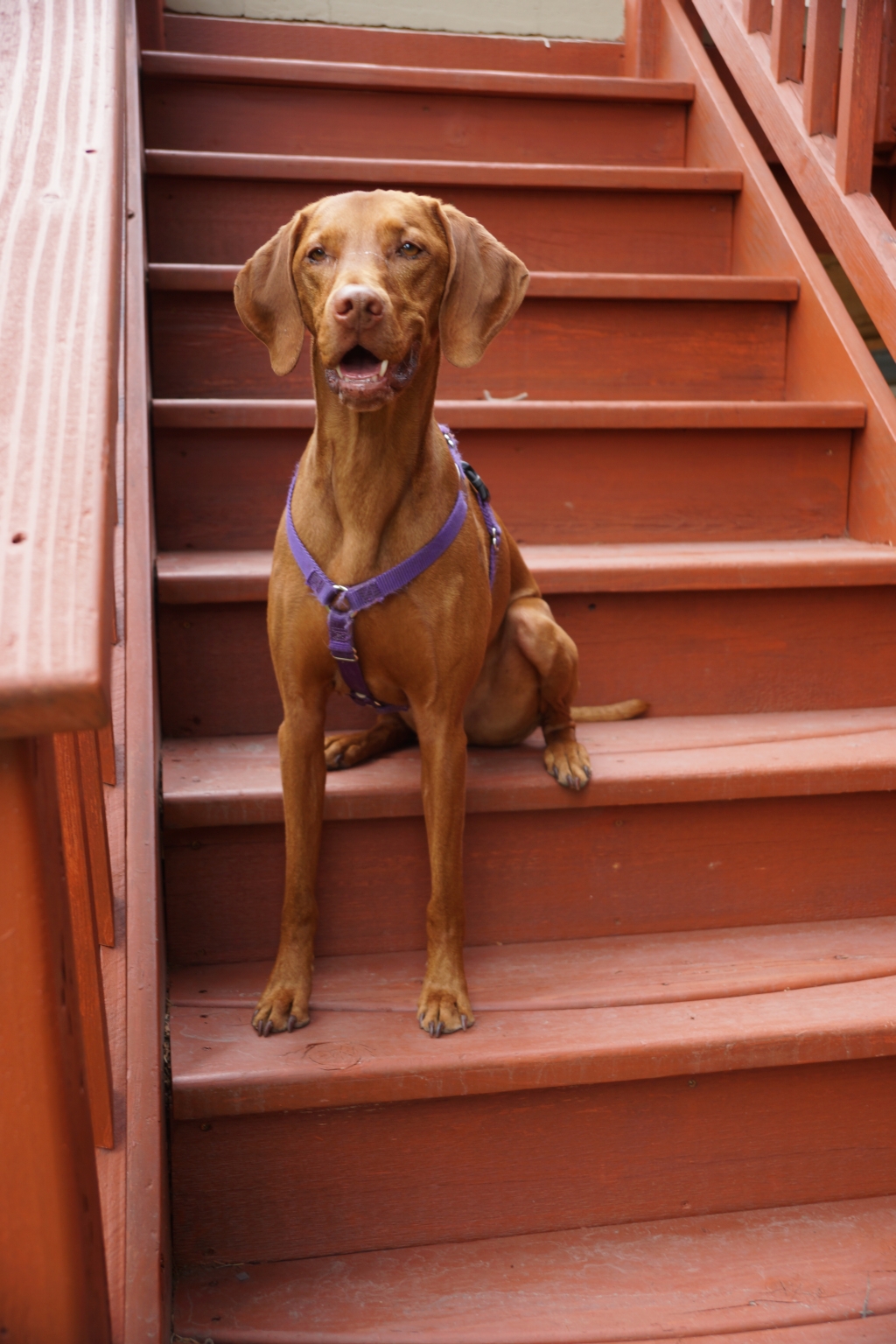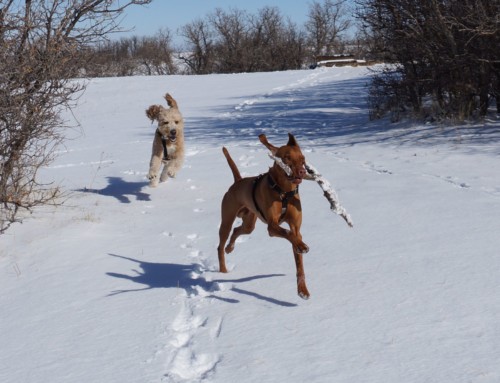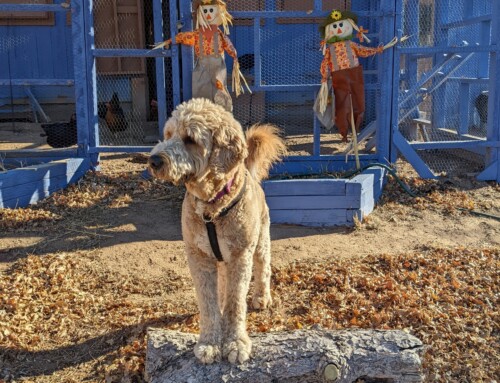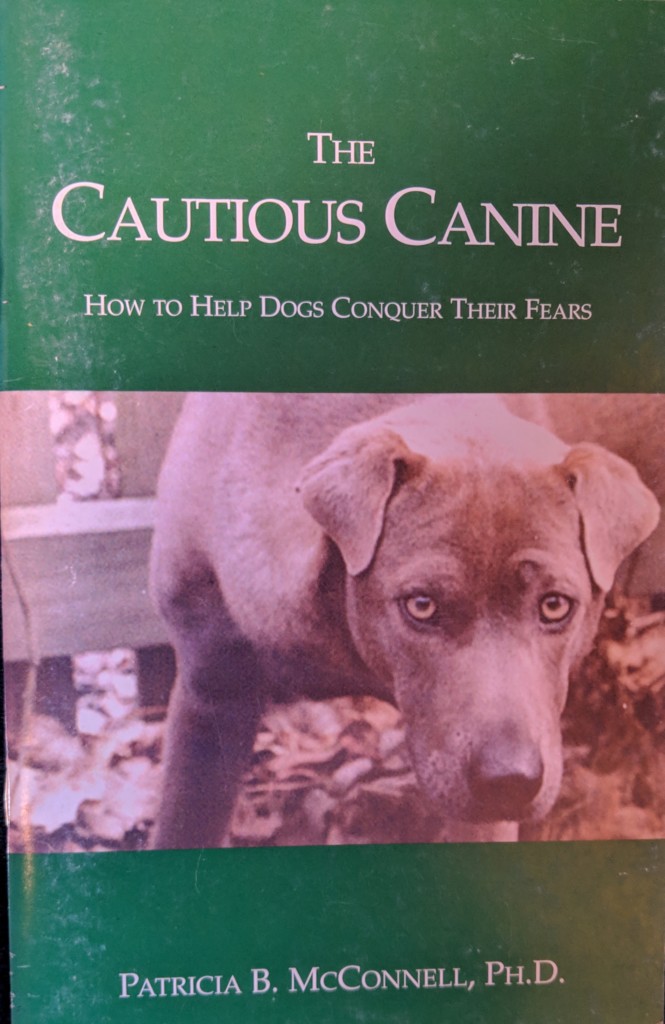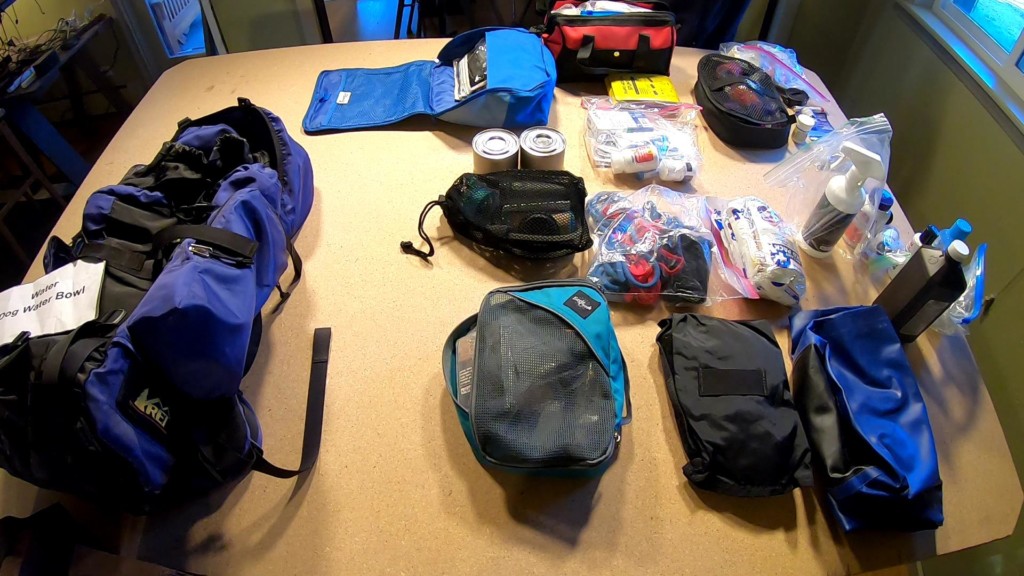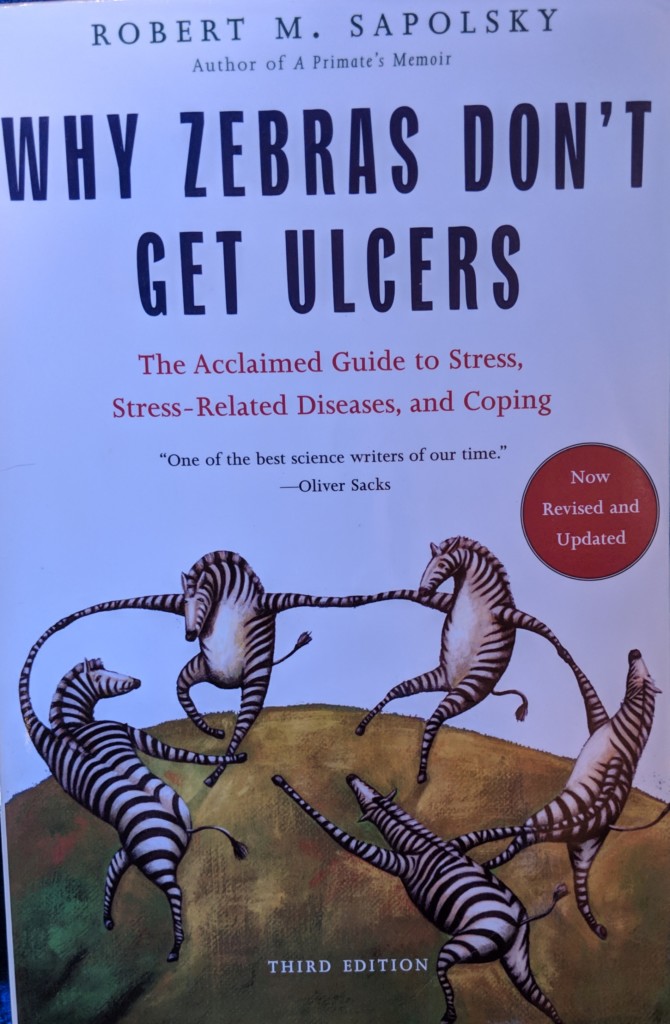DOG TRAINING OFFERED IN-PERSON AND ONLINEOur dog training services are delivered in almost any format that meets your needs. We have GROUP CLASSES at our indoor and outdoor facilities on our farm, ONLINE LIVE STREAMING classes, and SELF-PACED VIDEO-BASED training through our Online Dog Training Course. Our PRIVATE TRAININGS can be done in-home, outside, in public dog-friendly locations, at our facility on our farm, online via phone or video conferencing and through email. |
I recently worked with a couple of clients whose dogs were having trouble navigating stairs. In both cases, the families live in split level homes with several stairs but not full flights of stairs.
In the first case, the dog manages to go up the stairs in a reasonable fashion, but he leaps down the stairs, perhaps hitting one or two out of seven or so steps. He is a retired racing greyhound who is relatively new to stairs. In working with him, I noticed that his rear feet would hit the edge of the step and not hit flat on the step. His trouble is a lack of awareness of how and where to place his rear feet. By hitting the edge of the step, he doesn't have good balance and is not feeling secure about the steps. To compensate, he leaps down the stairs. While he manages this way, it's not a good long term solution as this can put a lot of strain on his joints. Arthritis or other problems can start to set in and cause pain.
In the other case, the dog is clearly anxious about the stairs and needs to get a bit of a running start to get up the stairs for the lower set, but almost never goes up the upper set of stairs. When enticed with treats, he will move his front feet up as many stairs as he can reach while still keeping his rear feet firmly planted on the ground. This dog has had trouble with stairs since he was a puppy and is now around 5 years old. His trouble with the stairs worsened after suffering from a broken back this past year. His back is now healed, but he still has a great deal of anxiety about the stairs. He is clearly anxious and lacking in confidence. He does not have good awareness of his back end and rear feet.
For both dogs, the stairs are a symptom of the real issue which is a lack of body awareness, particularly awareness of how to use their back ends and rear feet. Walking on flat ground is relatively easy, but when it comes to navigating things like stairs or climbing over things, they are not fully aware of their hind ends and how to use them.
The focus in helping both of these dogs is to build better body awareness. Since the stairs are already a known issue that causes some anxiety, we start building body awareness with other exercises. Some exercises consist of things like stepping over logs, walking through the rungs of a ladder laid flat on the ground, setting up small jumps, or stepping into and out of a basket/bin. Other exercises might include stepping onto a platform with their front legs and keeping their front legs in place while walking around the object with their back legs. Another awareness exercise is to learn to back up in a straight line. Backing up and stepping up onto an object with their back legs is another option. Teaching a dog to lift a specific leg on cue, especially the rear legs, can be a valuable exercise as well. We often teach our dogs to “shake” or “high five” with a front paw, but we usually don't teach them to do anything with their rear paws. (Think of the dogs in movies who are taught to lift their rear leg on cue to look as if they are marking something.)
Another option to consider with some of these dogs is whether there is a component of pain or discomfort. In the case of the second dog, when he began refusing to go up the stairs at all, it was the first sign of a medical problem. It's what led them to the vet and the discovery that he'd fractured his back. They still don't know how it happened.
If there is some pain or discomfort, obviously a visit to the vet is in order. Once serious issues requiring medical care are ruled out, sometimes TTouch, body wraps, acupuncture, chiropractic adjustments or massage might be considered to help the dogs make further progress.
These dogs are clearly are lacking in some confidence and body awareness. They need our help in working through these issues so they can safely and comfortably navigate the obstacles in their lives.
Our goal is to positively impact the lives of as many dogs and their families as we can, in part through our extensive library of video, infographics and text articles. |

